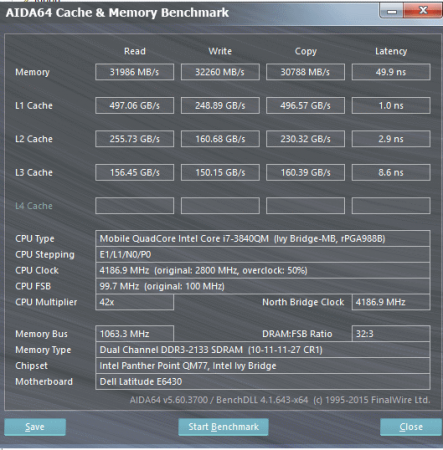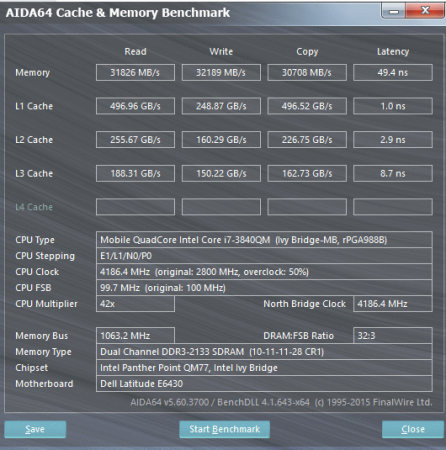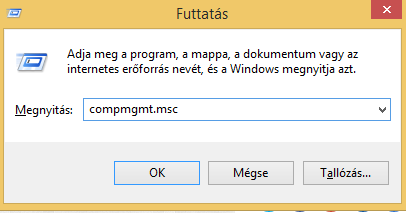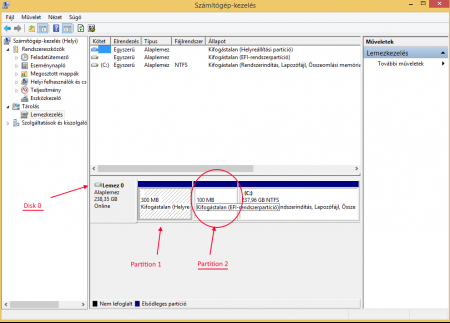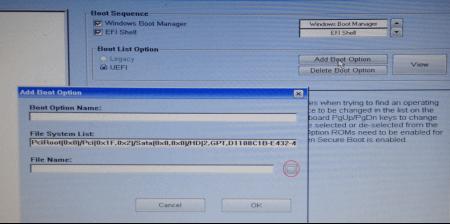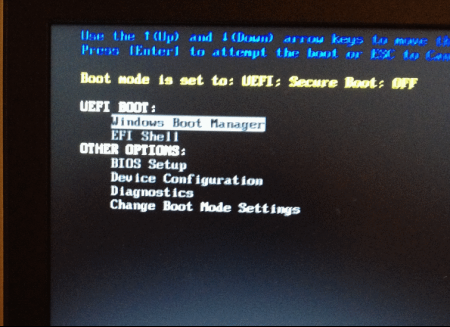
kondilac
Registered User-
Posts
43 -
Joined
-
Last visited
-
Days Won
1
Content Type
Profiles
Forums
Downloads
Everything posted by kondilac
-
With an unlocked FD, and disabled bios lock (0x40->0x0) I had no problems flashing the BIOS region with FPT
- 807 replies
-
- 1
-

-
- dell latitude e6430
- e6430
-
(and 2 more)
Tagged with:
-
Thanks. What is the situation with the clock, and the two control signals when using ports as X2 or x4? Have to use them from the first port in the bundle?
- 807 replies
-
- dell latitude e6430
- e6430
-
(and 2 more)
Tagged with:
-
Yes, You are right. But an x4 PCIE connection could still seriously hog the performance of any other components connected through the MCH. Anyway, i had some free time and created the layout for the little test board checking out what's the deal with that PCIE lane @ E-Modular bay, will etch it next week, i will keep this thread posted. Preparing for the worst case regarding PCIE4, is it possible to set PCIE 1,2,3,5 as x4? How about PCIE3 + any of 1,2,5 as x2?
- 807 replies
-
- dell latitude e6430
- e6430
-
(and 2 more)
Tagged with:
-
OK so i got a big concern regarding the x4 and even the x2 eGPU thing. Since we can only access the PCIE lanes from the MCH, and that is connected to the CPU via DMI which has exactly the same transfer rate as one PCI lane (5GT/s), i guess there is no real performance benefit from aggregating more lanes from the MCH... Timohour, can you do some benchamrking x1 vs x2 to confirm this? EDIT: I hope i was wrong, and just misinterpreted the info in Intel ARK. If the specified 5GT/s DMI is per lane, then 4xDMI2 = 20Gt/s, as Timohour stated below.
- 807 replies
-
- dell latitude e6430
- e6430
-
(and 2 more)
Tagged with:
-
I modified a slim PC case, to house a HDD, VGA,and a ATX PSU. Its the same size as the e6430 with the Dell PR03X dock, which sits on the top of it. The PSU powers the lappy through the dock, besides every component inside, and is switched on/off automaticly whenthe machine is docked/undocked. Works flawless with the little script, which disconnects the GPU as a device when i undock :). It's almost ready for the paint job, just missing the cutout for the 92mm fan on the top, which is blowing the air direcly to the intake on the laptops bottom. The interior air-chambers turned out really good, also has a front USB, working power button, and audio in/out. Will post some pics when its finished
- 807 replies
-
- 1
-

-
- dell latitude e6430
- e6430
-
(and 2 more)
Tagged with:
-
Thanks. Since i know the dimensions and pad distance of the MPCIE i can use them to create a little PCB that i can use to experiment. This is the next thing on my todo list after finishing my docking-pod, which is near
- 807 replies
-
- dell latitude e6430
- e6430
-
(and 2 more)
Tagged with:
-
I'm familiar with the experimentations describen in this thread regarding this matter, and those (including Your with the MPCIE card) only used the TX and RX signals, but not the other control signals, that's why i asked (maybe You haven't seen my edit). So i have one more question regarding this, as You noticed that a MPCIE card fits in this custom sata connector, does the pad-distance of it suit the PCIE-part of it, so i can access all the signals?
- 807 replies
-
- dell latitude e6430
- e6430
-
(and 2 more)
Tagged with:
-
Thanks for the explanation. Making the custom hardware is the smaller problem, port 4 is the big deal. Maybe Dell could enlighten us regarding this part... Can You tell me what is the case with the clock, reset and wake signals in x2, and x4 setups? Can i use them from any port in the bundle? EDIT: I dont recall this was mentioned here before, but the schematics of the e6420 also shows port4 routed to the modular bay. I'm pretty convinced now regarding if it is there or not
- 807 replies
-
- dell latitude e6430
- e6430
-
(and 2 more)
Tagged with:
-
AFAIK aggregating the individual PCIE lanes to x2 or x4 must be configured in the ME FW, and not all configurations are working. Am i wrong in this?
- 807 replies
-
- dell latitude e6430
- e6430
-
(and 2 more)
Tagged with:
-
Is there any progress utilizing the PCIE lane 4(E-module)? I would really like to max out my system with x4.2. Is x4 configurable using any 2 of the miniPCIE + EC + modular bay ME wise at all?
- 807 replies
-
- dell latitude e6430
- e6430
-
(and 2 more)
Tagged with:
-
I could sucessfully replace the IRST and LAN UEFI modules with UBU. It has options for VBIOS updating also, just in case You din't know about this tool.
- 807 replies
-
- dell latitude e6430
- e6430
-
(and 2 more)
Tagged with:
-
If i understand correctly you want to flash a modified ME FW, not a bios. Then you should use "fptw.exe -me -f e6430ocme.bin. The first argument is indicating that you want to flash only the ME region, and the second is that you want to Flash it.
- 807 replies
-
- dell latitude e6430
- e6430
-
(and 2 more)
Tagged with:
-
i can go down to 9-11-11-X, but it performs rorse somewhy than 10-11-11-X, the memory copy is down from 30.5k to 27k. , anything lower for tRCD and tRP than 11 doesn't boot, and , and tRAS wise i can kind of set anything (tried even 13) and it does run memtest without errors, but the setting affect the performance and latency a little bit. Latency wise 28 is the sweet spot, RW speed wise is 27. The difference is very small, but consistent across multiple benchmarks.
- 807 replies
-
- 2
-

-
- dell latitude e6430
- e6430
-
(and 2 more)
Tagged with:
-
Nice find! It is working indeed! I can boot at 2133 10-11-11-34, trying to tighten a bit more
- 807 replies
-
- dell latitude e6430
- e6430
-
(and 2 more)
Tagged with:
-
Yes i have also noticed that 8bit - 16bit problem, but as i checked the default value reads out as 0x16, so i guess it is 0x116 indeed by default, there is only the problem with reading, and maybe writing it. * Thaiphoon Burner http://www.softnology.biz/files.html
- 807 replies
-
- dell latitude e6430
- e6430
-
(and 2 more)
Tagged with:
-
I checked on my system, and custom timings also doesn't work, but setting the command rate to 2T does. Do you use "thorough" boot mode? Your best chance to use custom timings for now is to write new/alter existing JEDEC profiles to the sticks, or add XMP profiles. You can do this with Thaiphoon Burner
- 807 replies
-
- dell latitude e6430
- e6430
-
(and 2 more)
Tagged with:
-
OK, one thing is sure now, if custom timings are enabled, your system wont boot. You should try CMOS reset, 1 stick only, 0x1EF to 0x2. It should boot into windows, and there you should check with CPU-Z or AIDA that the CR2 is set to 2. After this is working properly, we should get custom timings working with 1 stick, because we know that the memory controller can run 1 stick at factory timings, first do a CMOS reset, and set the DIMM profile to custom (0x1EE to 0x1) and configure the timings to factory settings: tCL = 11 [0x1FE -> 0xB] tRCD= 12 [0x1FF -> 0xC] tRP = 13 [0x200 -> 0xD] tRAS = 35 [0x201 -> 0x23] tRC = 48 [0x209 -> 0x30] tRFC = 278 [0x204 ->0x116] tRRD = 6 [0x206 ->0x6] tWR = 17 [0x203 ->0x11] tWTR = 9 [0x207 ->0x9] tRTP = 9 [0x208 ->0x9] tFAW = 27 [0x20B ->0x1B] It should boot, but if not first double check if i done the conversion from DEC->HEX good, and the respecting EFI vars. Since these are the factory timings it should boot up fine, as if JEDEC profile.
- 807 replies
-
- dell latitude e6430
- e6430
-
(and 2 more)
Tagged with:
-
I was able to boot with my i5-3210M @2133MHZ @CR2 (setting EFI var 0x1EF to 0x2), but reboot functionality was gone as described in my old post. If i recall correctly, i had also set custom ram setting using EFI var 0x1EE to 0x1, to the command rate setting be effective. The 3840QM had no trouble at all booting @2133 with factory timings, I guess i got a better performing one, because other users also had trouble with 2133. First, i would make sure that the BIOS is in factory state. Removing the main battery, and then the CMOS batery for a minute will revert everything to factory settings (also the SATA mode to RAID!!!) And then try to boot with one stick only, and then 2. Please describe the behaviour (black screen only, or you can get into BIOS, etc.) If no success, try loosening the command rate to 2. If 2133 @CR2 does not work at all, try setting Memory Frequency, Variable: 0x1E6 to 0x4 (1867Mhz). You should be able to boot without problems, at factory timings. If this works out, and You would like to experiment, you should try setting the custom memory settings, esspecially loosening the CAS latency to 12 (I have no idea where did my post with the variables go BTW...) For this, You have to enable custom ram setting using EFI var 0x1EE to 0x1, then tCL , Variable: 0x1FE to 0xC (=12) EDIT: Maybe try setting EFI var "DDR Selection": 0x1E9 to 0x0, to set the voltage to 1.5V instead to 1.35. Maybe the stick internally regulate the VIN to 1.35 anyway, but if not then it could help. If i will have time, i will also try this, and check if i could raise the BCLK a bit. But most likely the memory controller of the CPU is the weak part of the system, and i guess only loosening the timings will help.
- 807 replies
-
- dell latitude e6430
- e6430
-
(and 2 more)
Tagged with:
-
This information is kind of nothing but as i recall, the HD4000 VS Hackintosh iGPU issue is caused because some memory setting of the iGPU, which can be configured using EFI vars, so if i'm correct with this then A16 could work. I did a lot of experimenting with various bios, EC, and ME, versions (and also succesfully upgraded the intel SATA UEFI module while chasing the best performance combination) so i can provide you a dump of the BIOS only region of A07, which you can flash with intel FPTW, after disabling the bios lock by setting EFI var 0x40 to 0x0. BUT Without a hardware SPI programmer, if this procedure somewhy bricks your system, unbricking could be very hard, or maybe impossible without the help of Dell. Theoretically, the BIOS dump is "vanilla" factory state, so it should work but i can not guarantee it. Tell me if you want me to upload the dump. EDIT: Accordint to Timohour's post below, if this will be your last chance to get it working, first you should backup the chips raw contents with a HW programmer, and then try it maybe.
- 807 replies
-
- dell latitude e6430
- e6430
-
(and 2 more)
Tagged with:
-
I had the same issue, and with Timohour we narrowed down the cause for this to the ME FW "hack" kind of. But for me, downgrading to A03 worked if i recall correctly, and from there you can upgrade to A07. I would also like to experiment with OSX at some point, could You share the steps? Am i correct in the screen artifacts are caused by the memory allocation of the iGPU? Because that can be configured using EFI vars i think
- 807 replies
-
- dell latitude e6430
- e6430
-
(and 2 more)
Tagged with:
-
Dewos, did you try setting the power profile to "ultra performance (max fan levels)" ? These power profiles suppiled by the Dell Feature Enhancement Pack are communicating with the embedded controller. For example, when the quiet one is enabled, my CPU also gets throttled heavily regardless the settings in TS, or the power limits set in the BIOS. I also encountered heavy throttling by using a 65W Dell adapter. Using the above mentioned ultra performance, i got no unnecessary throttling (using a 130W dell PSU ofc.) It would be great to somehow reverse engineer what is happening under the hood between the OS and the EC when setting these profiles... I consider this bloatware (especially under w8.1, the hotkey icons are also ugly and buggy), and it would be great to have manual control over the fans, and to disable the short time power limit throttling, which is also initiated by the EC. As i found out, the fan is capable of running even higher speed(default highest ~4000 RPM, DEEP ultraprofile highest ~4500RPM), using SpeedFan, setting the fan to 100% results in ~4800RPM if i remember correctly, but after a split second the EC resets the speed to its own setting. While investigating the possibilities to gain full control over the fan i got an interesting finding, on some dell machines there is a hidden engineering menu accessable by a keyboard sequence (Hold FN + Shift, press 1, 5, 3, 2, 4 Release FN+ Shift, Press FN + R) which does not work on the e6430 for me, but the first part of the sequence has some effect, because the caps lock lights up for a seecond... The EC Fan control can be disabled in this engineering menu on other machines, to gain full control with Speedfan
- 807 replies
-
- dell latitude e6430
- e6430
-
(and 2 more)
Tagged with:
-
In my case, the necessary settings in the BIOS was only the ones regarding the iGPU state (the two variables i mentioned before), i did not touch the Optimus settings. I assumed that you did not read the first post, because you were looking for non existing options in the bios, which can be only set through EFI vars, and it is well documented in this thread, and you seem like you have never encountered with the whole thing before (requesting link, and instructions)
- 807 replies
-
- dell latitude e6430
- e6430
-
(and 2 more)
Tagged with:
-
How to make a permanent boot option to EFI Shell This guide is for advanced users only, i take no responsibility for any damage caused by doing this First determine the disk, and partition number of the EFI system partition. This can be checked using disk management in windows computer management Press Windows + r run compmgmt.msc Then run "DISKPART" through an elevated command prompt, and assign a drive letter for the EFI partition with the following commands: select disk X select partition Y assign Where: X is the number of the disk which has the EFI system partition Y is the number of the EFI system partition on the disk (In my example, X = 0, Y = 2) The EFI partition will be now accessible using your favourite file manager if it has administrator privileges. Obtain a copy of the EFI shell from here and unpack the contents of the archive to the EFI partition in the following folder: /EFI/Boot Now reboot the machine and get into the BIOS, and add a new boot entry. You name it as you want, and select the "bootx64.efi" file from the location you previously copied it. From now on, you can boot into the EFI shell anytime you want, after selecting it from the boot menu (press F12 at boot) Pro tip for lazy users like me: The normal bios options can be changed using the Dell Command | Configure tool from the OS. Reboot required, mangling with the laggy bios interface isn't
- 807 replies
-
- 1
-

-
- dell latitude e6430
- e6430
-
(and 2 more)
Tagged with:
-
Check the two secondary GPU dropdown menus http://www.3dmark.com/fs/7139888 @viilutaja Since you have already disabled the dGPU-s root port,in order to get optimus working, iGPU must be set to always on, and set to primary. These settings like most of the advanced ones are not available from the BIOS, and can only be modified through EFI variables, which are accessable through an EFI shell. You can make a bootable thumbdrive with it, or follow the steps in my next post. You should set EFI var 0x1d4 to 0x0, and 0x1d8 to 0x1. No offense, but I highly recommend for you to read this whole thread because the advanced user base of this machine provided a great deal of useful information (everything about the accessibility of the advanced BIOS options through EFI shell also), but at least you should read the first post before asking questions which were answered many times before. In my next post i will describe how to make a permanent boot option to get into EFI shell, but it will involve messing with the EFI system partition with wich one can easily brick his current OS boot so it is only for advanced users who know what are they doing, and i take no responsibility for anything.
- 807 replies
-
- 1
-

-
- dell latitude e6430
- e6430
-
(and 2 more)
Tagged with:


